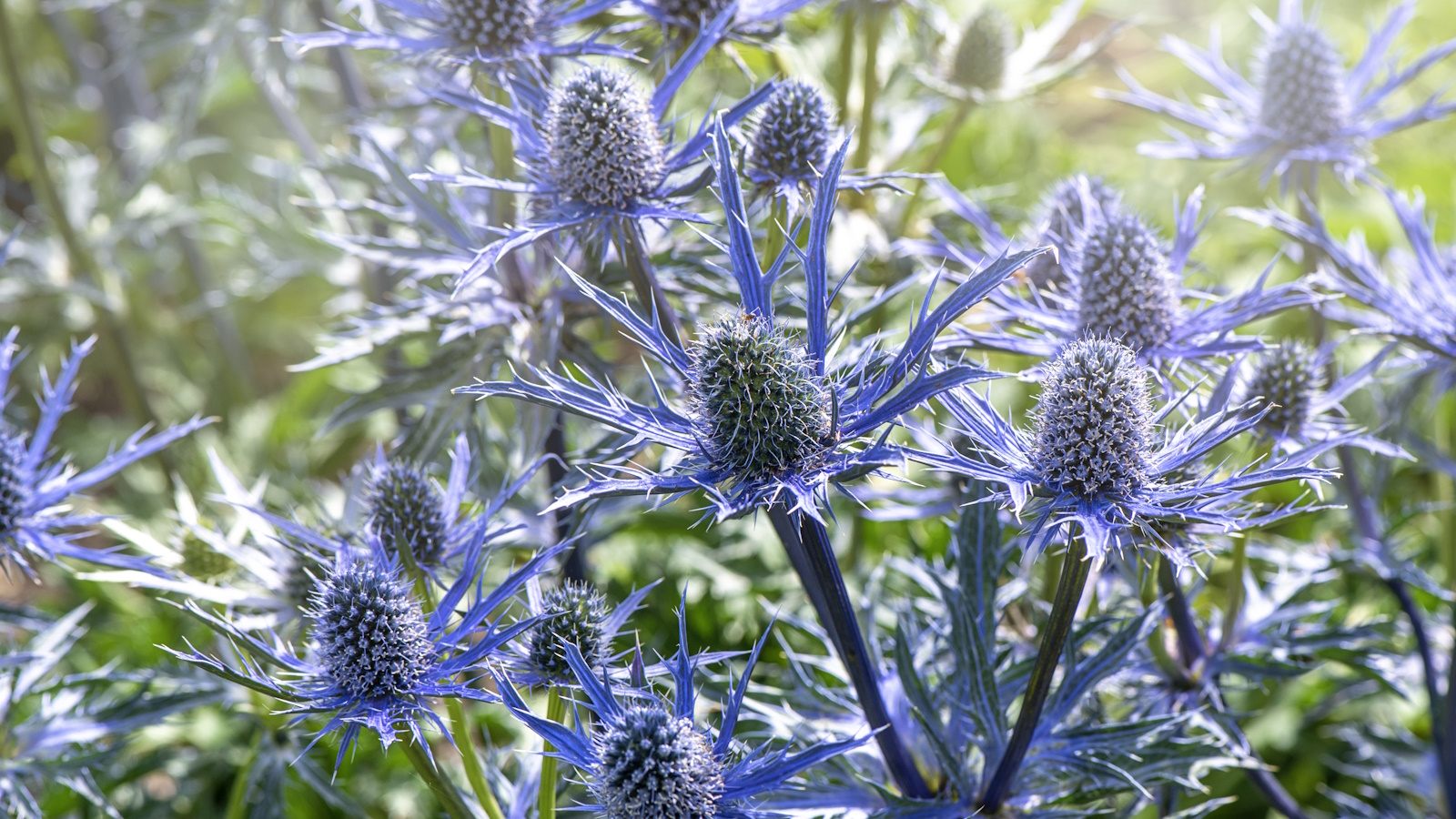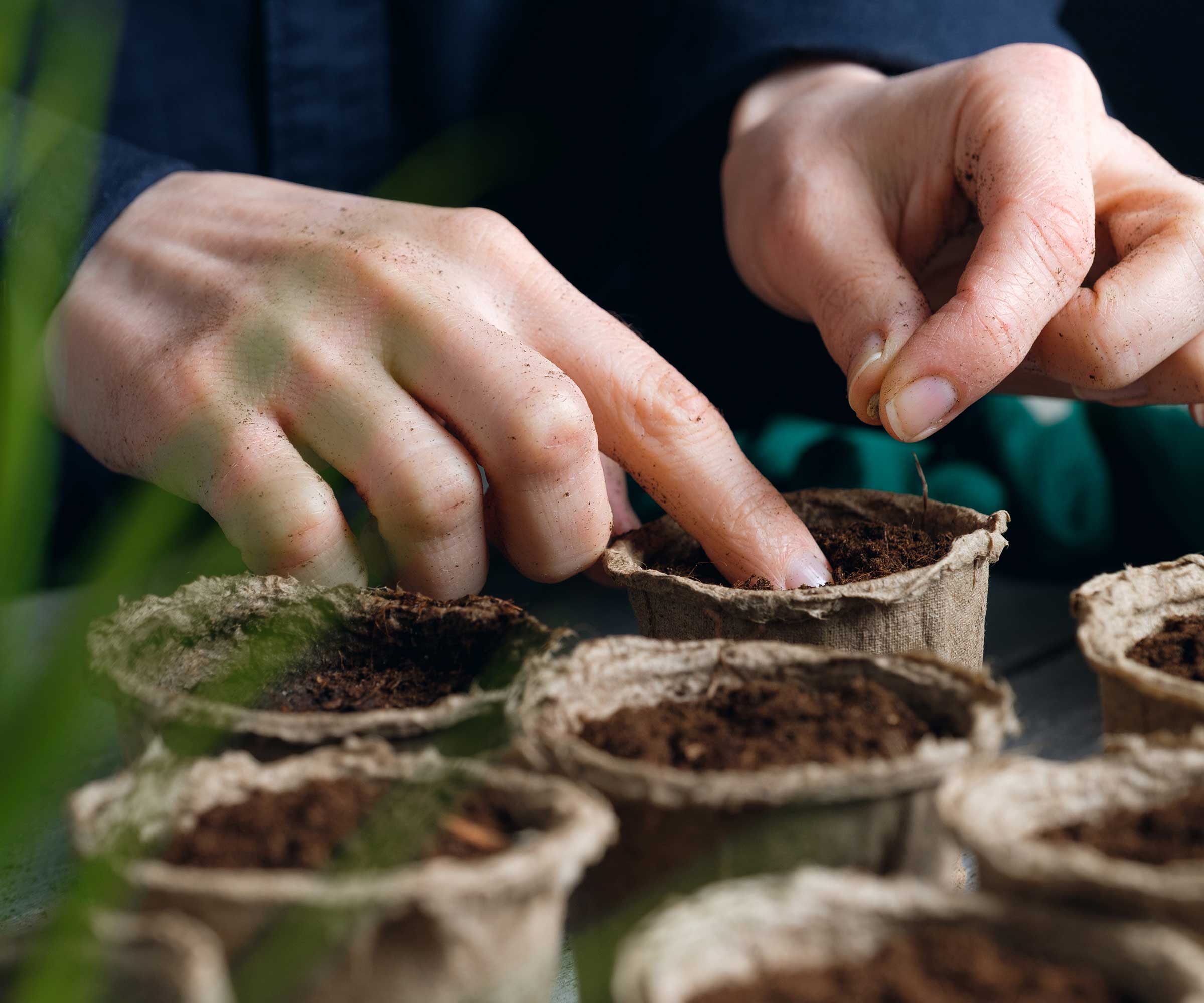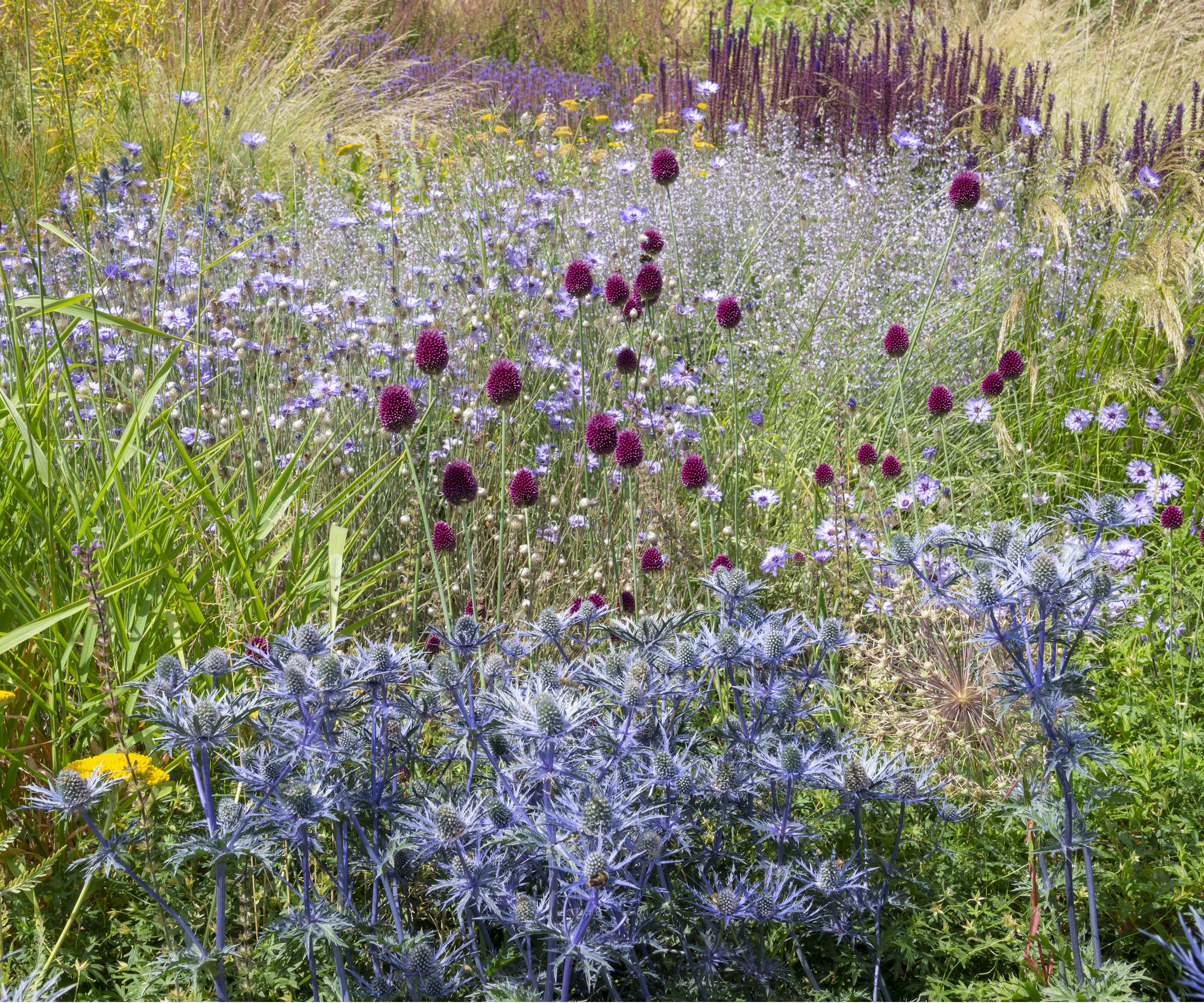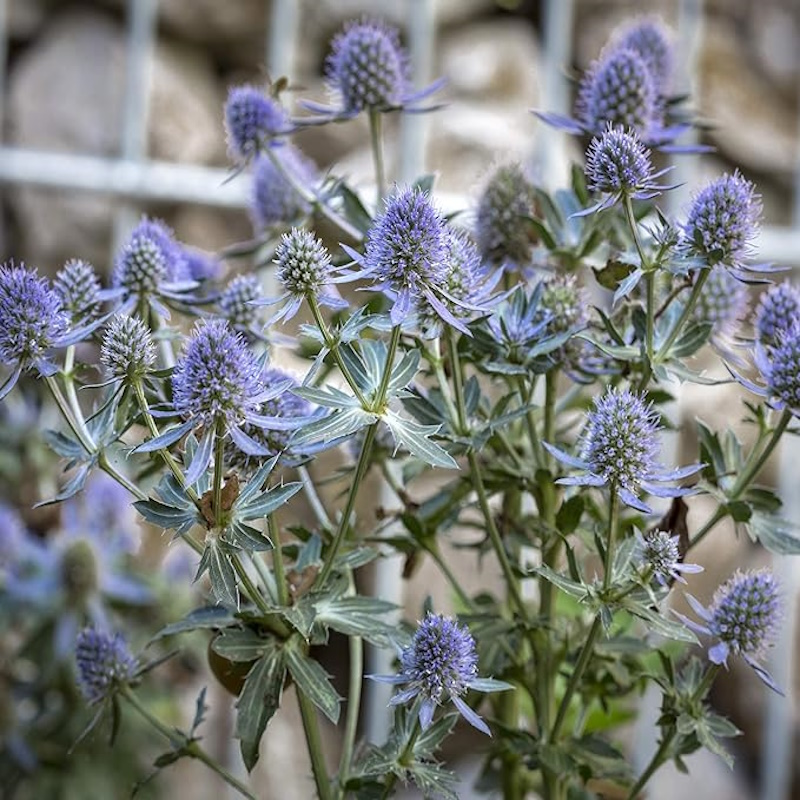How to grow and care for eryngiums – 3 expert tips for these drought-tolerant, sculptural summer flowers
Sea holly provides starry blooms in bright blue hues for borders and flower beds


There is no right way to curate the perfect summer border. It all comes down to personal taste and the look you want to achieve in your backyard. But, if there's one unique bloom to add to your flower display, it's eryngium. These unique blue-purple flowers offer structure in flower beds during summer and sculptural seed heads for fall and winter interest.
Also known as sea holly, eryngium is native to the UK and is a perfect addition to classic cottage gardens with a hue that softens borders while offering strong leaf structure. Despite its name, sea holly is actually not related to holly plants but is a member of the Apiaceae (carrot) family. It's an architectural plant that blooms from July to September before its beautiful seed heads appear in fall.
These unique plants put on a breath-taking display and are a true conversation starter to have in your yard. They grow best across US hardiness zone 4 to zone 9 and with the right care these perennial plants will return to your yard each year. Here's what experts say about growing and caring for eryngiums successfully.

3 expert tips for growing eryngium
If you're trying to create a border or flower bed full of blue flowers, eryngium is a must for your collection. These striking flowers love to be at the center of attention throughout the summer season, and will keep rewarding you with their bright blooms year on year if you maintain optimal growing conditions. Experts say there are just a few things to keep in mind when growing sea holly.
1. Sow seeds in fall

As with growing many summer flowers from seed, it can be a good idea to get sowing in fall before harsher temperatures kick in. In fact, eryngium is one of the plants to sow in November for bright blooms in the following summer.
'It’s best to sow the seeds in the fall, in a permanent spot, since they don’t like to be transplanted,' notes Vladan Nikolic, gardening and plant expert from Mr. Houseplant.
Eryngium plants have a strong and extensive root system that shouldn't be disturbed when established, making transplanting a bit trickier. However, this doesn't mean you can't sow seeds indoors to transplant, you just have to take some extra care when doing so.
Design expertise in your inbox – from inspiring decorating ideas and beautiful celebrity homes to practical gardening advice and shopping round-ups.
'If you’re impatient, you can start them indoors, but this is more complicated and involves cold treatment and transplanting,' says Vladan.
'The seeds need to be stratified, i.e. left in a refrigerator for about 4 weeks in the fall. This cold treatment helps break the seed dormancy by imitating the weather conditions to which the seeds sown outdoors would be subjected,' he adds.
Seed stratification is a technique that helps speed up the process of seed germination and is advised for starting seeds indoors. After the stratification period, you can plant the seeds into a seed tray or small pots, like this seed tray from Amazon. You should then keep them in a warm spot and keep moisture levels up to encourage seedlings to grow.
'The germination period is very irregular; some seeds germinate after a week, and some take up to two months,' says Vladan. 'Let the seedlings grow for a few weeks to become robust. Harden them off before transplanting,' he adds.
Your eryngium seedlings will be ready to transplant in late spring after the danger of frost has passed.

Vladan Nikolic is a gardener and houseplant expert with over 10 years of experience growing flowers, indoor plants and more. He is the founder of the blog Mr. Houseplant and is a plant social media influencer with over 500,000 followers.
2. Choose a full sun position

When planting up your eryngium, it's important to choose a permanent spot that they will thrive in. As mentioned, these perennials have robust root systems that make them tricky to move once established - so, it's best to choose the optimal location from the beginning.
'Sea holly thrives in full sun, and the ideal position for these plants is a spot with 6-8 hours of direct sunlight and with well-draining soil,' says Vladan. 'A south-facing position in a garden is an excellent place for sea holly,' he adds.
If you are lucky to have a south-facing garden with lots of sunlight, eryngium is a great choice and will be very happy in your outdoor space. They can also grow well in containers, making them ideal for south-facing balconies.
Try growing them among flowering shrubs for full sun for a bright summer display that blooms for longer.
3. Water deeply, not often

Knowing how to water plants is the key to success when creating a thriving garden, and it's important to remember that every plant will have different needs. If you're looking for drought-tolerant planting, the good news is that eryngiums can cope well with dry periods and don't need to be watered frequently to stay happy.
'Sea hollies are drought-tolerant and don’t need to be watered unless there’s a dry spell. If you have to water them, water deeply and around the base,' says Vladan.
You should let your eryngiums dry out before watering again. To make it easier to monitor moisture levels, use this moisture meter from Amazon.
Choosing drought-tolerant plants like sea holly, lavender and verbena, is also a great way to reduce water waste in your yard.
FAQs
Should you deadhead eryngiums?
Eryngium, or sea holly, will bloom from July until September. When its blooms start to fade in fall, deadheading can be a good idea to try and encourage new blooms and extend the blooming season. At the same time, eryngiums are among the best plants for seed heads and choosing not to deadhead them straight away will allow you enjoy them longer as part of a fall or winter garden.
Does eryngium need fertilizing?
It isn't necessary to fertilize eryngium. In fact, experts say it's best to avoid feeding these flowering plants.
'They prefer sandy soil, which is poor to moderately fertile. If the soil is too rich, the plants will sprawl,' says Vladan Nikolic, gardening and plant expert from Mr. Houseplant.
These striking summer flowers can bring long-lasting interest to your backyard and will instantly brighten up your borders and flower beds with very little maintenance. If you want to make your backyard even more drought-tolerant, discover some inspiring ideas in our expert guide to drought-tolerant landscaping.

Tenielle is a Gardens Content Editor at Homes & Gardens. She holds a qualification in MA Magazine Journalism and has over six years of journalistic experience. Before coming to Homes & Gardens, Tenielle was in the editorial department at the Royal Horticultural Society and worked on The Garden magazine. As our in-house houseplant expert, Tenielle writes on a range of solutions to houseplant problems, as well as other 'how to' guides, inspiring garden projects, and the latest gardening news. When she isn't writing, Tenielle can be found propagating her ever-growing collection of indoor plants, helping others overcome common houseplant pests and diseases, volunteering at a local gardening club, and attending gardening workshops, like a composting masterclass.
